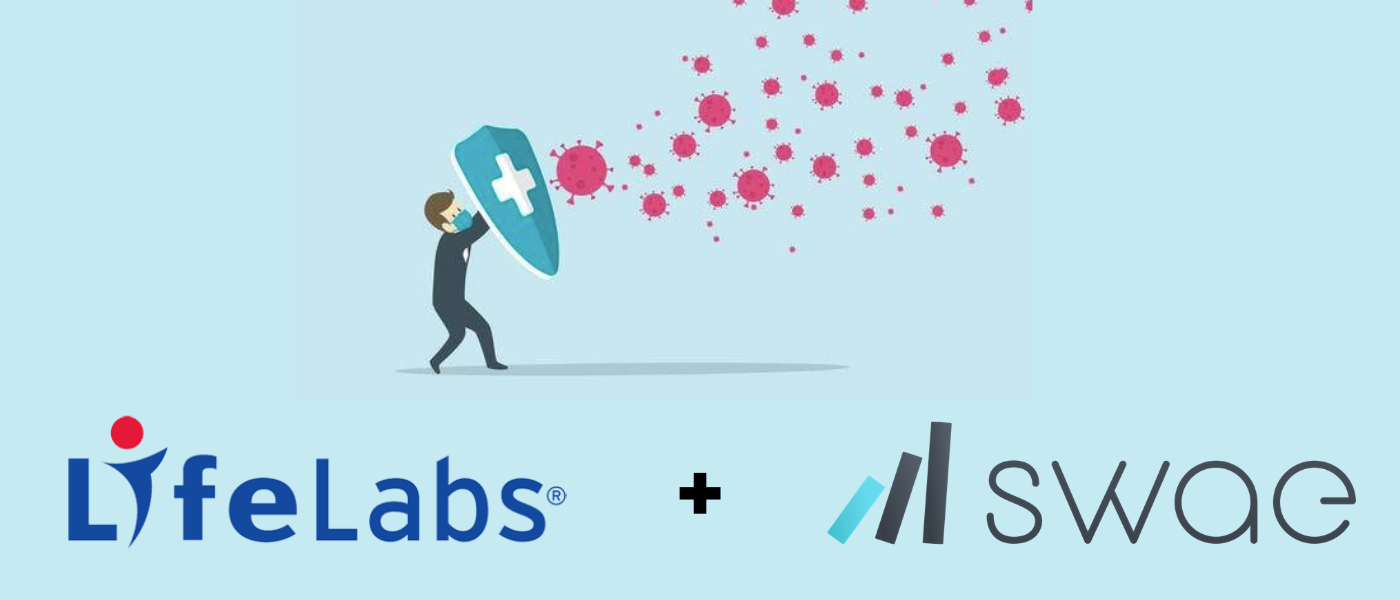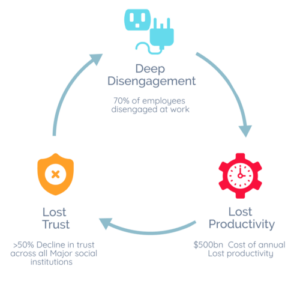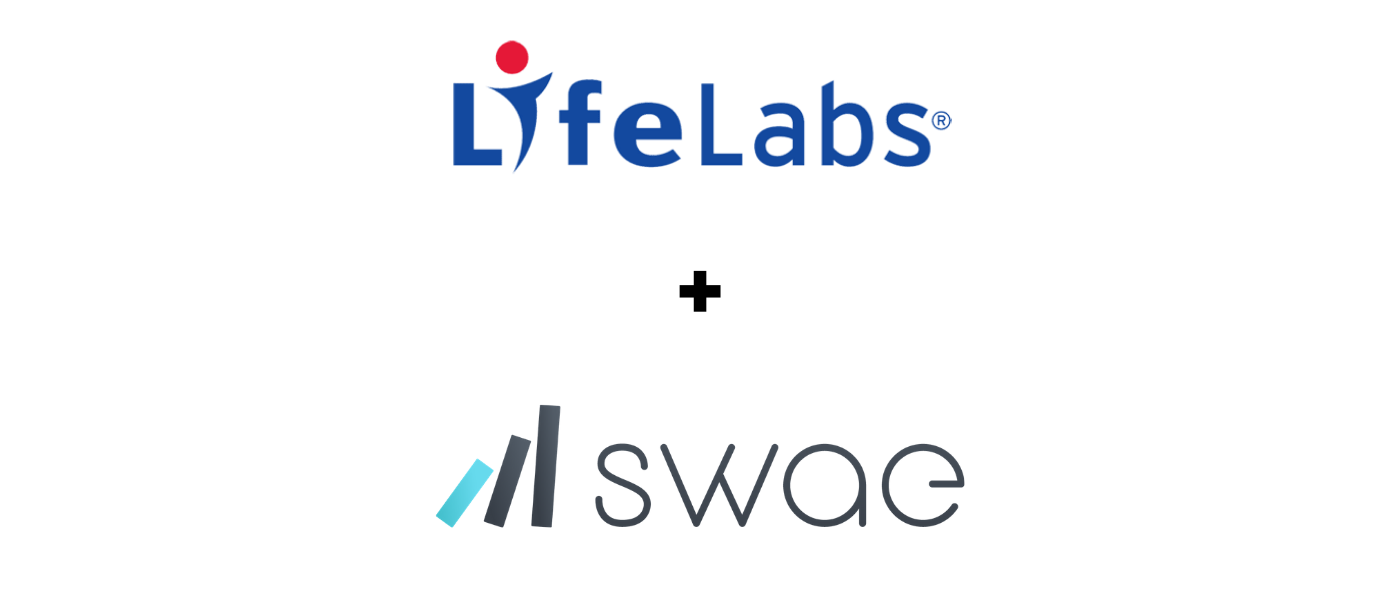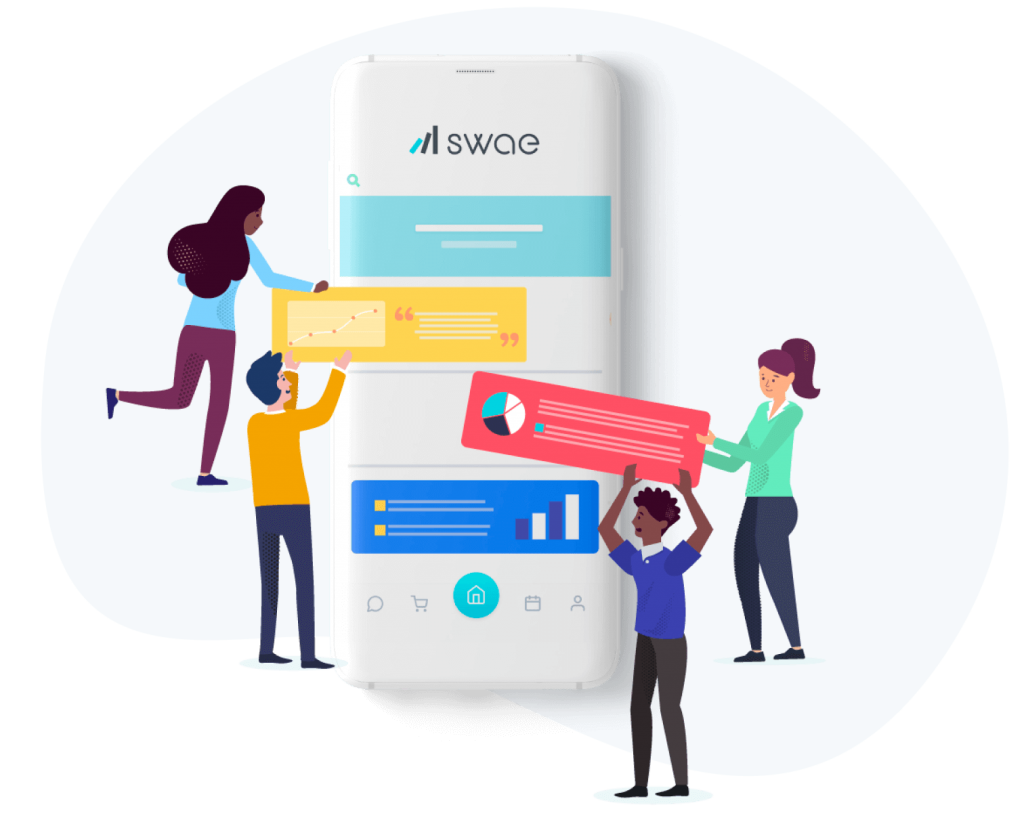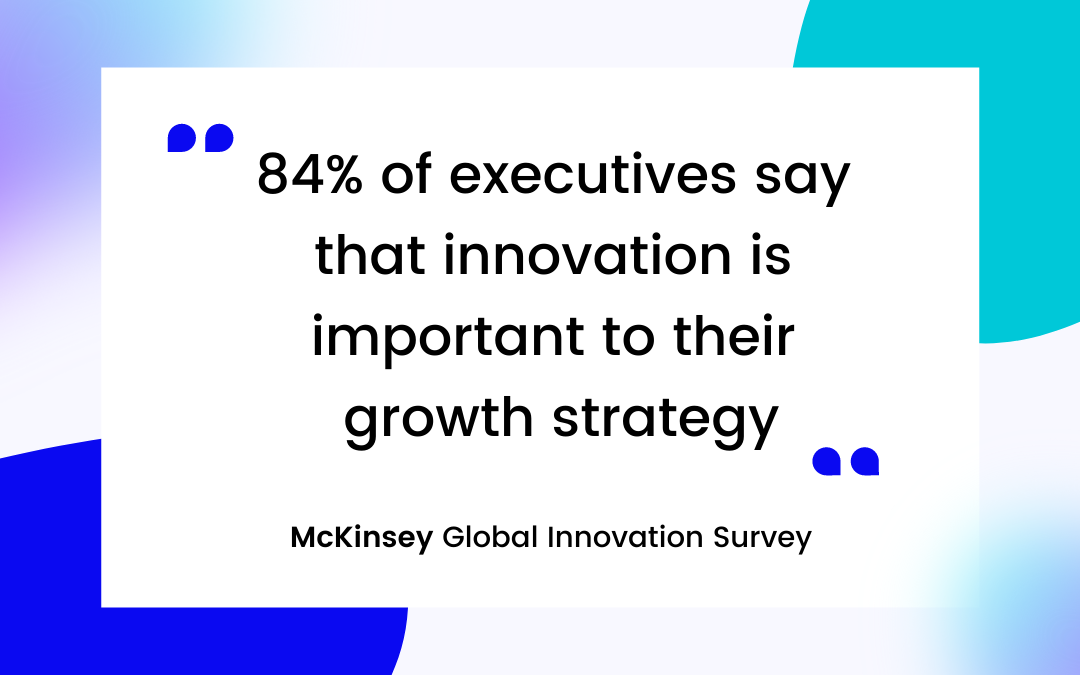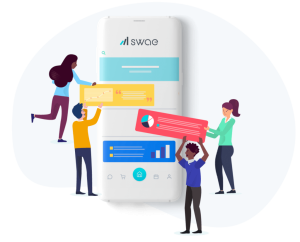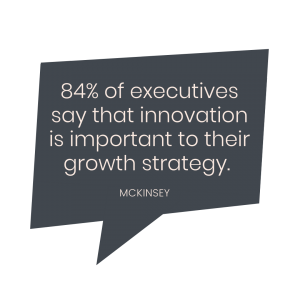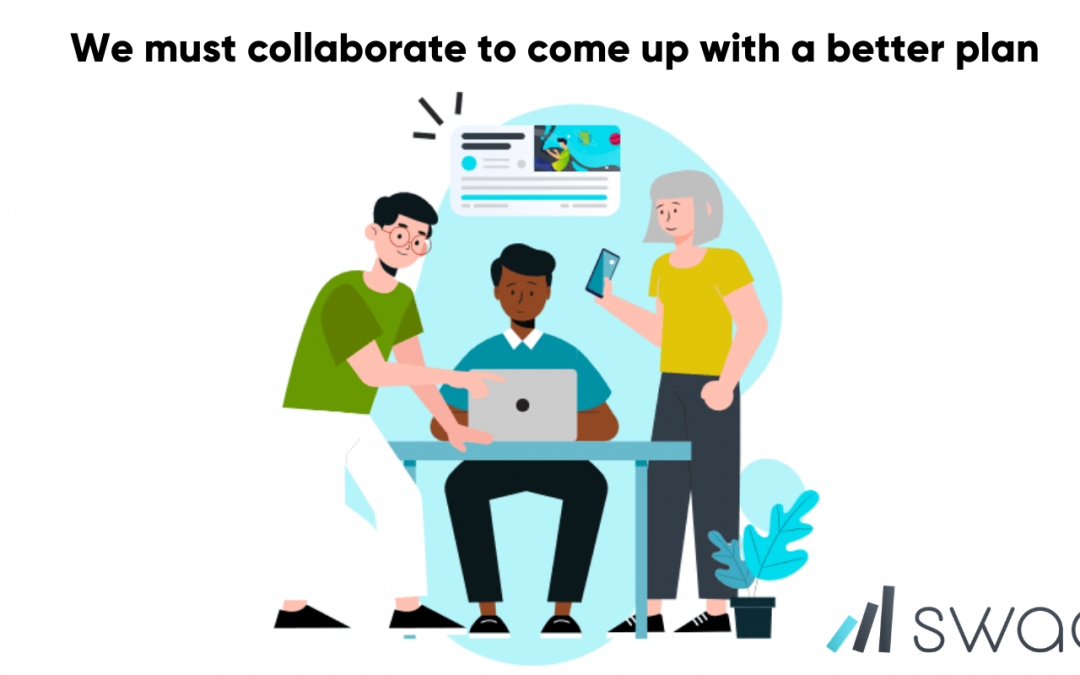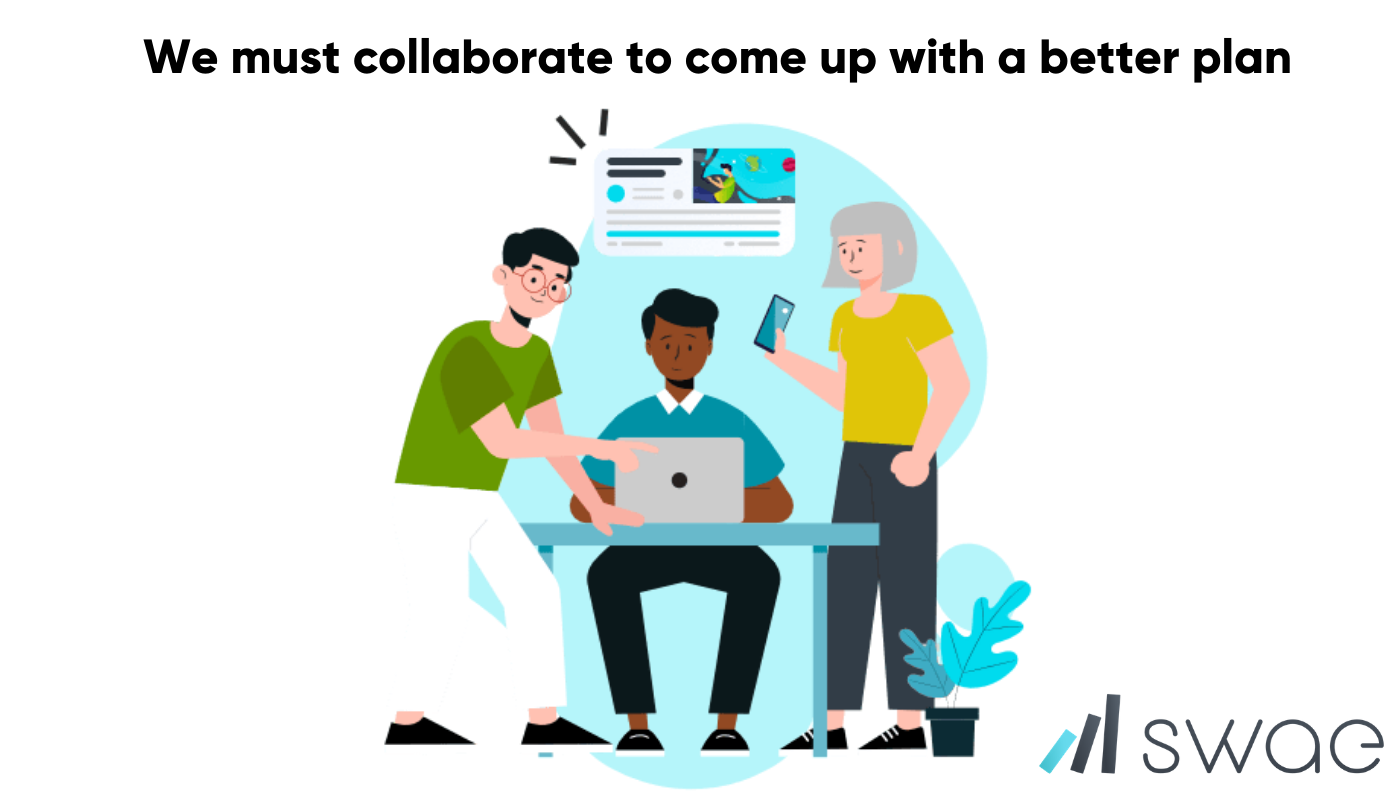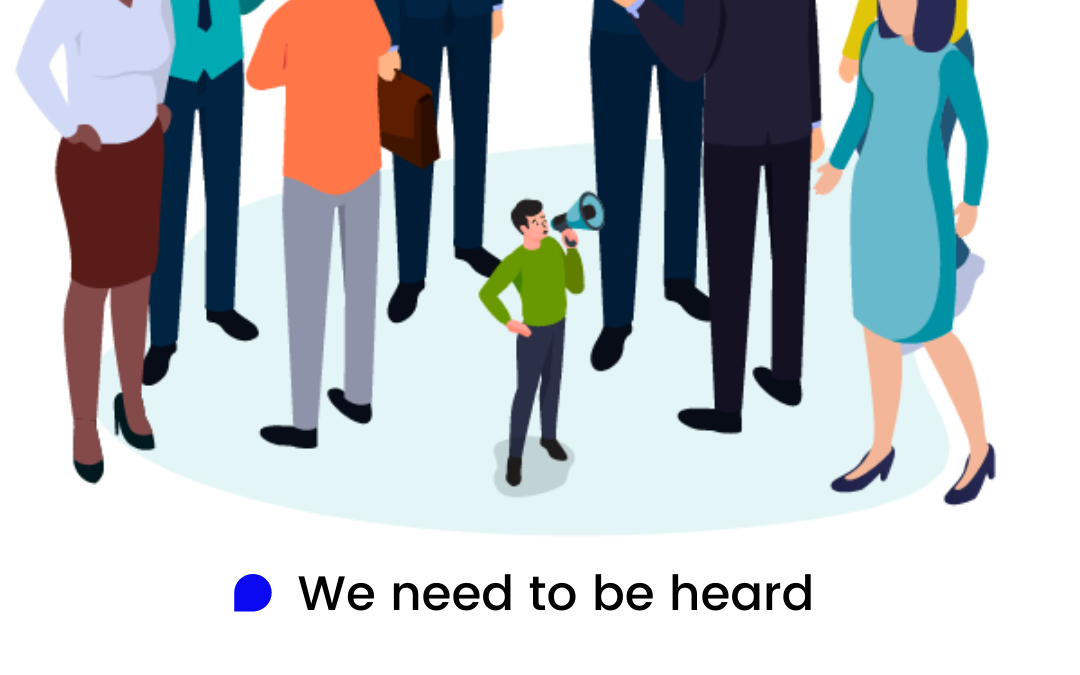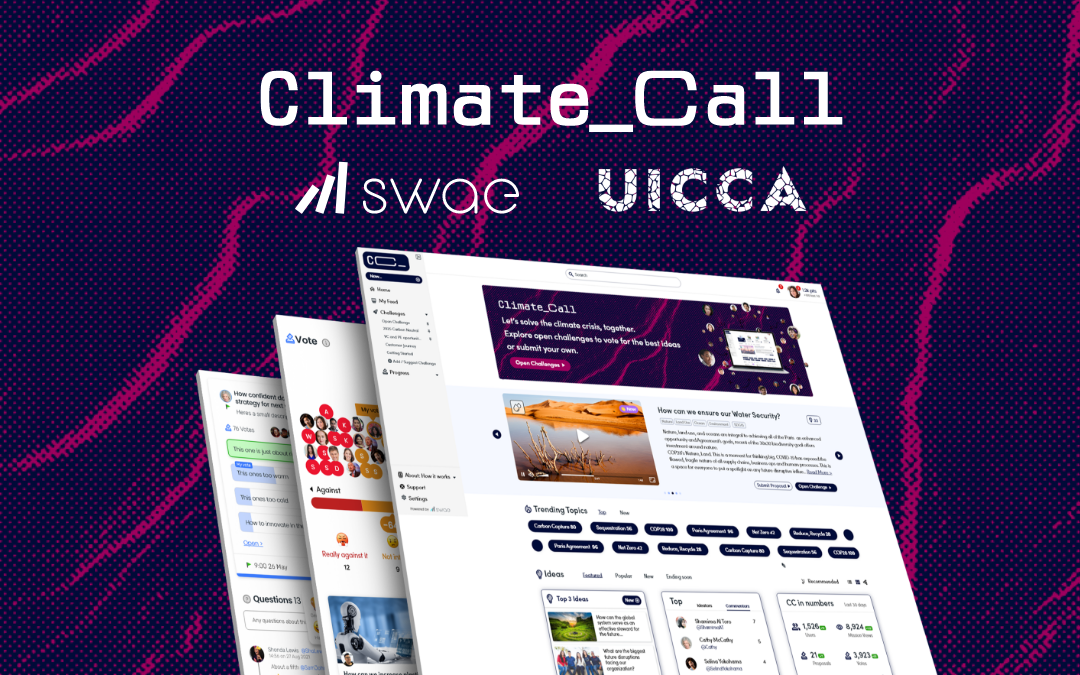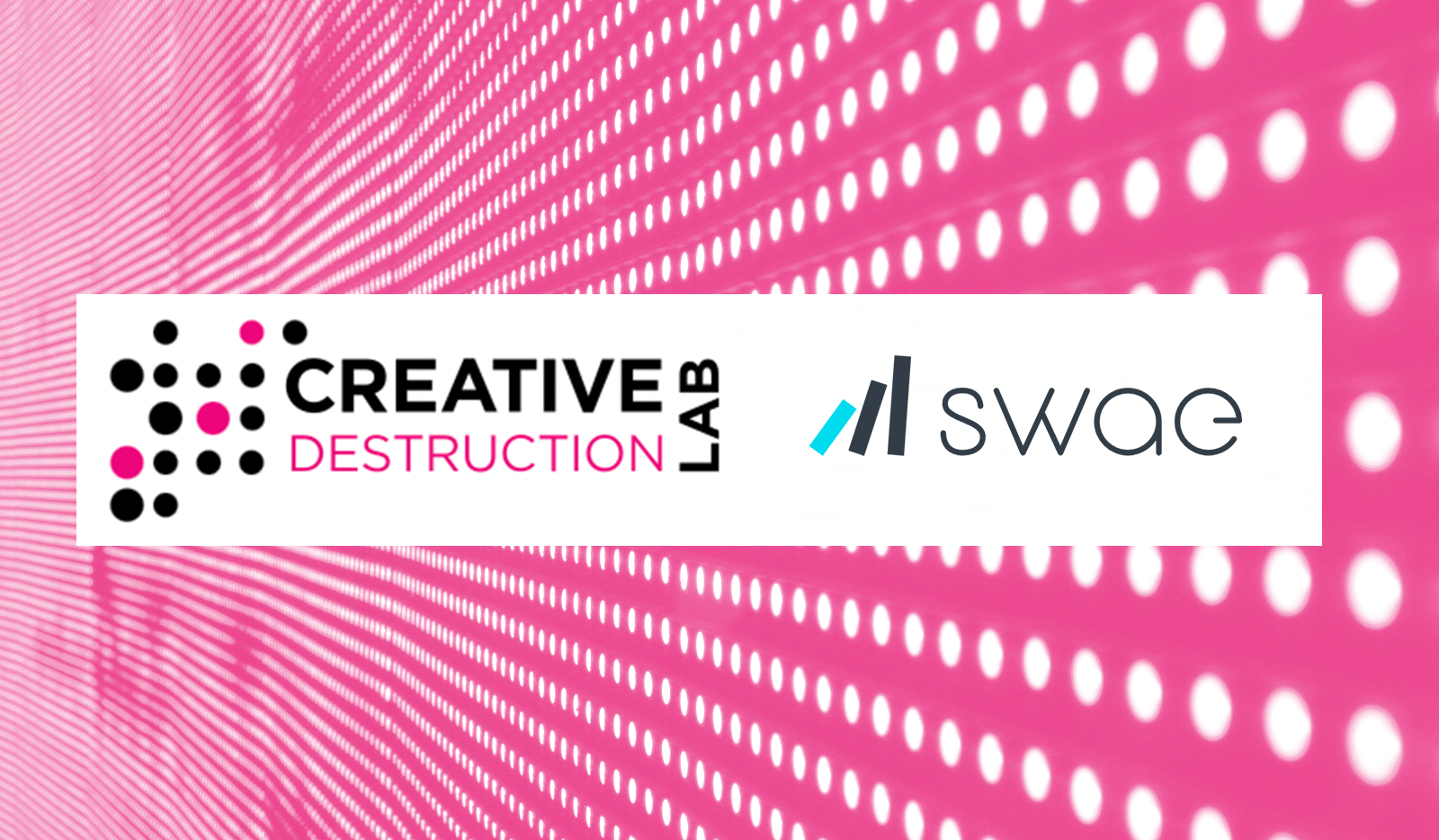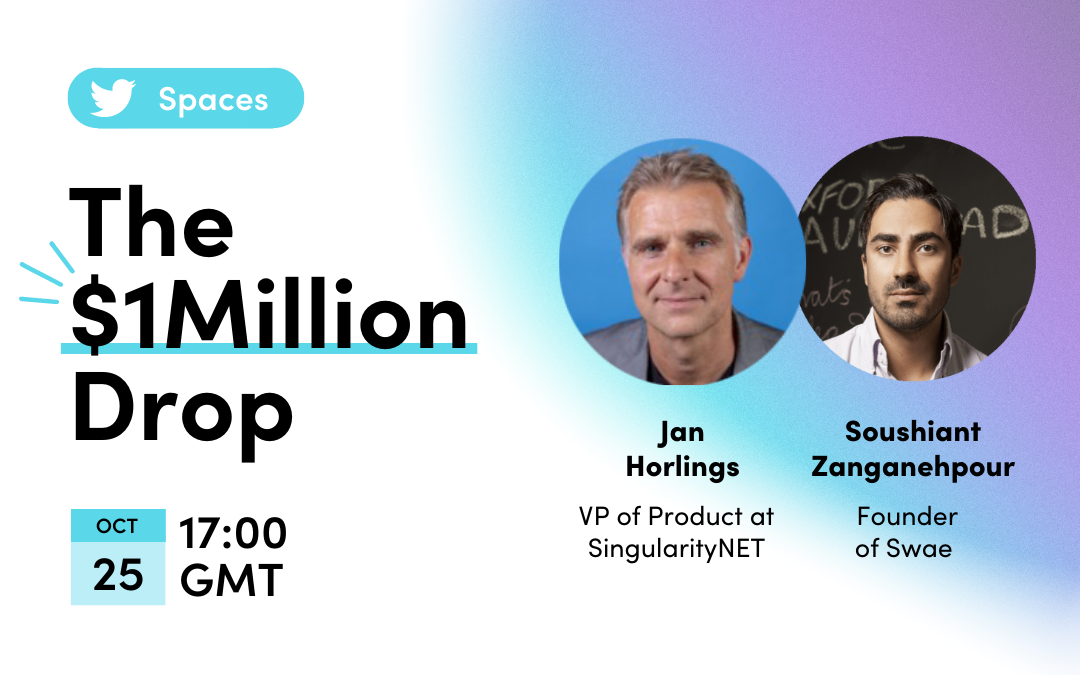Winning Climate Solutions Announced at Climate Call Grand Finale5 min read, 8 Nov 2024UAE Independent Climate Change Accelerators (UICCA) announced earlier this week the winners of the inaugural year of Climate Call, an...
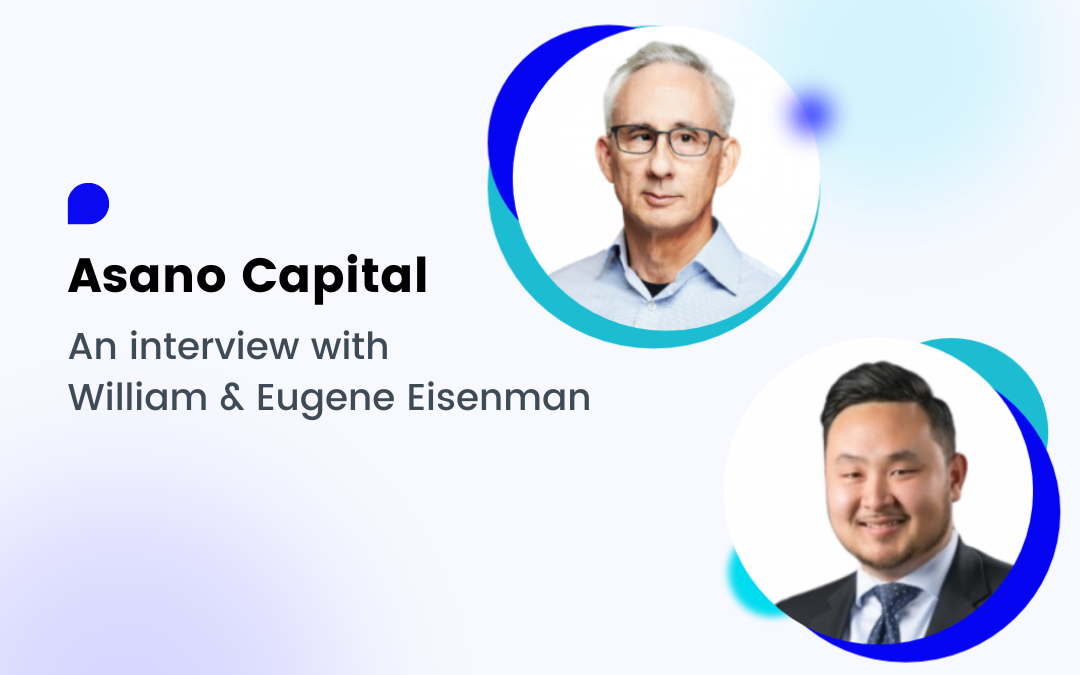
Former Netflix Head of Engineering Joins Swae’s Seed Round as Lead Investor
Former Netflix Head of Engineering joins Swae’s Seed Round as Lead Investor
12 Min Read 27 Jan 2021
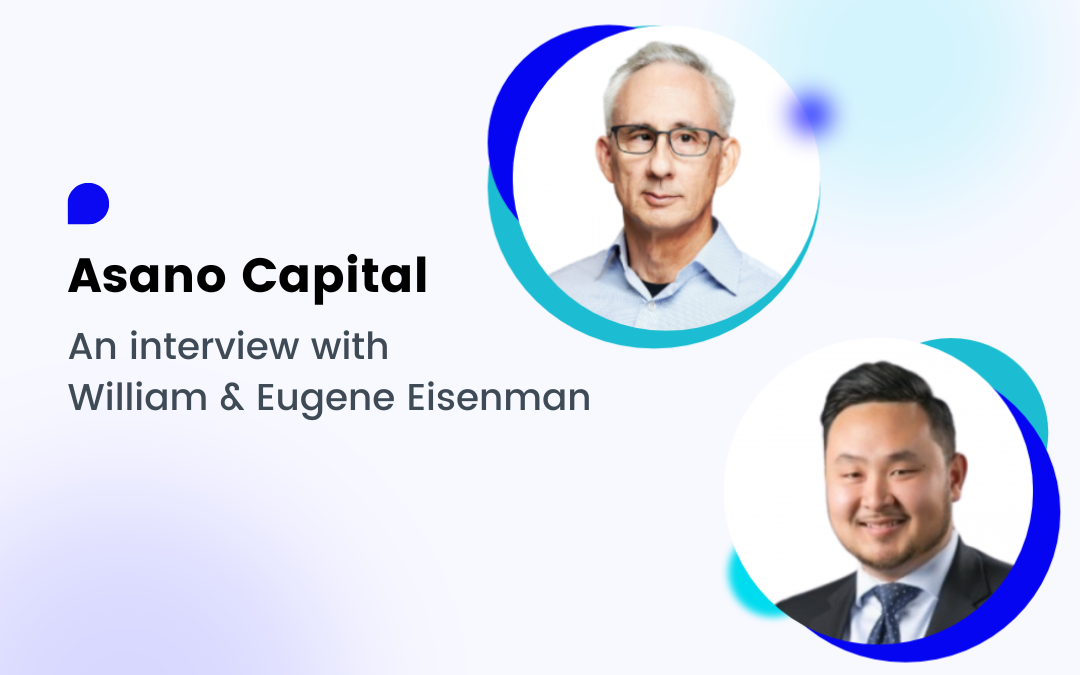
Swae Celebrates New Partnership with William and Eugene Eisenman: Experienced Technology Executives & Investors With Winning Track Record of Turning Early-Stage Risk Into Scalable Success
Asano Capital leads the Seed round in Swae
William Eisenman is a former Captain in the US Navy. He graduated in three years with a Bachelor’s and Master’s degree in Chemistry concurrently. During his first year of college, the Navy was actively recruiting him to join the CBRN division. After joining, he quickly rose through the ranks to become one of the youngest Captains in the Navy at the time. After his time in the military, he transitioned into the technology sector. He has held various executive and leadership roles throughout his career in tech. He is most well-known for his accomplishments at Netflix, where he helped scale the DVD business and was later the creator of the Video Streaming Platform, and at Palm, where he helped create the webOS platform. He is currently is a Co-Founder and GP at Asano Capital.
Eugene Eisenman graduated with a degree in Finance. He briefly worked at Goldman Sachs, and then a small firm doing private secondary transactions and is a Co-Founder and GP at Asano Capital.
William and Eugene, along with their other investment partner, run Asano Capital together. Some of their team’s past successful angel investments include early positions in Netflix, Callaway Golf, MD Pharmaceuticals, and others, reminding us of the Greek myth of Midas, whose touch turned everything to gold (taking all of the positives of that myth into context here).
We’re extremely excited to announce that they have become Swae’s Lead Investors in Swae’s seed round, and we’re ecstatic as to what this partnership will bring to Swae as a whole. Those that invest in Swae become part of our startup family. We develop a strategic and close working relationship with each of our investors so that we can together advance Swae’s platform and offer to develop more powerful ways to bring value to the world.
Already, William and Eugene have spent countless hours conducting due diligence on Swae, reviewing the code base of the platform, UX/UI, and AI systems. They’ve shared important feedback and will continue doing so since William and Eugene will also be joining Swae’s Advisory Board, bringing his years of experience to bear on important strategic decisions.
We believe William and Eugene will be a vital source of intelligence for improving Swae’s platform, offering, user experience, and developing innovations outside of our existing roadmap. Soushiant Zanganehpour, CEO of Swae, sat down with William and Eugene Eisenman to learn more about their decision to invest in Swae, and the interview is below. In the interview, we learn about who the duo are and what potential and hidden value they saw in Swae that compelled them to lead our Seed Round. Their unique outlook and support to help Swae exceed its goals in 2021 is a thrilling start to the new year!
“Swae is like a sophisticated watercooler so a bunch of people can formally come to talk about what’s really going on in the company and then figure out how to fix it.”

William Eisenman Lead Investor in Swae
An Interview with William and Eugene Eisenman, Lead Investors at Asano Capital
With Founder & CEO of Swae, Soushiant Zanganehpour @Soushiant

Soushiant
William, your background is extremely diverse and impressive. You went from being a biochemist and ex-Navy Captain, to moving into the corporate and technology world in senior positions. From what I’ve seen, all of the companies you’ve worked for or lead at have introduced major innovations and products to shape not only their sector but the world of technology. Let’s first talk about your role bringing video-streaming to Netflix, I think anyone in tech would want to know more about that!

William
I’ll give some background about my career before Netflix to provide some context moving forward. I was the former Head of Technology Innovation at Read-Rite. I helped take the fifteenth-ranked semiconductor, building it into a top-two company and leaving that role to be a Partner joining Capgemini’s consulting practice. During my time at Capgemini, I worked with various clients across different sectors like aviation, healthcare, pharmaceuticals, semiconductors, financial, technology, etc. My teams and I were advising these companies on potential acquisitions, scoping out new business opportunities, creating new divisions to go after those markets, scaling their entire business operations quickly and efficiently, among other things. As I was boarding a plane to meet a few clients, I received a random call from someone at a startup called Netflix. I let them know that we could schedule a time to meet after I got back from my trip to discuss some of the issues they were facing at the time. After my business trip, we met up for lunch, and I was asked to look over their entire process. There were No NDAs at the time, so it was relatively easy to gain visibility into their operations and contribute feedback quickly. At that time, they had about a thousand users (1000) and were renting out the DVDs at 25 cents each and shipping them to customers. They were losing a lot of money at the time because the cost of sending a DVD was more than the price they charged each customer per DVD rental. My military background and my management consulting experience allowed me to look at their operations and see clearly “this isn’t going to work.” So while we were finishing up lunch, on the back of a paper napkin, I wrote out what I thought it should have been versus what it actually was.
Within a couple of weeks of implementing the changes I had suggested, they reported that they stopped the bleeding and credited me for saving them millions! I was invited back for another lunch, and before I left the lunch meeting, to get into my car and drive away, their VP of Operations, Former CEO Marc Randolph, and now current CEO Reed Hastings chased me down and hired me on the spot!
After I joined, in about 1998/1999, I helped successfully scale their DVD business. One of the first changes I made was switching their business model from renting per DVD and switching the revenue model to a consumer subscription business charging $19.99 per month. By the end of my first year, I was able to completely eliminate their losses and we made a profit because Netflix’s DVD business started to really take off quickly. The consumer subscription shift gave us a better quality of revenue, allowed us to track our net retention, and a more consistent way to track our growth.
During this time, I was successfully scaling the DVD operations but also knew that the DVD business although it was great and getting really great traction wasn’t that scaleable in the long run. So I began thinking about how to innovate our business and was also pushing to explore video streaming (though that isn’t what we called it then) because I also felt that DVDs were going to be a stop-gap between VHS and Streaming. I knew that bringing curated content directly to people’s televisions and computers would be the wave of the future, which would reduce the marginal cost of delivery significantly, allowing them to focus on having the best content. Our long-term vision was to be the place where everyone went to for streaming any kind of content from TV, Movies, Music, and Games because the underlying technology is similar.
The biggest hurdle at the time was technology with Dial Up and storage costs for the streaming business, so it was kind of a hard sell to go from DVDs to becoming a tech company. We obviously made that decision and never looked back. At Netflix, we believed that with the video streaming technology and a consumer subscription business model we had a very viable company that would hit economies of scale with good unit economics. Internally at Netflix, our team just knew it was going to work and be a bigger business than the DVD business that did so well.

Soushiant
Eugene, what’s your background?

Eugene
My story is actually closely intertwined with my father William’s experiences throughout his career. You could say I literally grew up with him through his career in the tech and consulting world. From a very early age, I went with my father to work every day after, I was closely watching, witnessing, and experiencing all of these moments in his career that he mentioned.
As you know kids pick up a lot of things quickly and through osmosis. I was no different, I unconsciously picked up a bunch of things along the way from his experiences that have helped me thus far. When my father was a partner at Cap Gemini, I watched how his teams identified key problems, their approach to solving those problems and presenting their clients’ solutions. When he was a Netflix, I was there sitting in many meetings with the leadership team, and they asked me questions about what I thought, to actively beta testing and giving my feedback on the UX/UI of the video streaming platform. That’s why for example little kids can be given the remote and figure out how to navigate Netflix’s platform without any help. At Palm, I was a beta tester for the WebOS platform to find potential bugs or issues and provide feedback on the phone design. So, I like to think I had a small role I played and got to watch his career successes thus far.
With everything that I mentioned before, you would think I had a degree in something related to tech like Computer Science or Engineering but my background is actually in Finance. When I graduated from school, I started working at Goldman Sachs. I quickly realized I would rather work in the venture capital and private equity space, so I made the shift to doing private secondary market transactions for VCs and founders, getting liquidity for their shares.In that role, I was talking to a lot of investors and founders that actually encouraged me to quit that role and begin investing based on my unique upbringing because of my time with my father. It also helped that I made an early investment before I went to college in bitcoin and it’s obviously done very well for me. That early investment in Bitcoin really started to take off around the time I was doing the Secondary Transactions. My bitcoin investment taking off plus the founders and investors I worked with gave me the encouragement to make the leap to be an investor. Now, I’m currently one of the Co-Founders and GPs at Asano Capital investing in startups. These weird early experiences have shaped me into who I am and definitely help shape me as an investor in startups.
![Swae_Resources_MIT_Sloan_Review_Diversity, Equity and Inclusion Initiatives Need Action, Not Lip Service_plain Swae_Harvard_Business_review_How to Be Seen as a Brilliant and Bold Leader [Become a Great Communicator].png](https://swae.io/wp-content/uploads/Swae_Resources_MIT_Sloan_Review_Diversity-Equity-and-Inclusion-Initiatives-Need-Action-Not-Lip-Service_plain.png)

Soushiant
William, looking back at the many changes in your career, is there an arc of interest that guided your decisions or were they spontaneous? For example, what made you jump to a high risk company like Netflix from a safe bet like CapGemini or go to a high risk company like Alom from the safe haven of Palm? Do these decisions provide some insight into your tolerance or understanding of risk?

William
As I shared before, I was a former Captain in the US Navy working in the CBRN (Chemical, Biological, Radiological, Nuclear) Division. My experience in the military and, in particular, the pressure of being entirely responsible for the lives of many other people really tuned my senses to pick out situations where risks were too high or vice versa where risk could be managed. At the time, if I made the wrong decisions, I could kill one of my subordinates or other members of the US military worldwide.
My choices could either cause harm to members of our military, or I could find solutions that would get the job done and keep us all safe. If you were overseeing departments in the military, you would be tasked with dealing with the department budgets. I was fortunate enough to be blessed with the burden of always getting less money than I asked for and told to accomplish the same goal anyway. This time in my life taught me many great skills and lessons that have been a foundation for my military and tech career. I learned leadership, how to carefully assess and manage risk, accomplishing goals with limited resources, and learned that change is the only constant you either change to win or try to cope with the change.
When I transitioned to the technology world, I worked for Read-Rite, a semiconductor company built on chemical engineering. I was Head of Technology Innovations, where I essentially created and built out the Innovation group.
Because of my strong chemistry background, I had the technical foundation and requisite skills to jump in and be useful immediately.
But when we began manufacturing, I realized that I was a natural systems thinker and had a knack for looking at multifaceted systems with multiple moving parts and could see ways to make them better. After realizing I am a systems thinker that was attuned to risk, I could present solutions to optimize processes. When I left Read-Rite, they were one of the top 2 semiconductor companies in the world. Read-rite certainly wasn’t a safe bet when I first joined and was maybe in the top fifteen at the time. After I left, within five to seven years, they were out of business because they thought far enough ahead of everybody and stopped innovating.
When I joined Palm, they were one of three industry-leading telecommunications companies at the time. The other two industry-leading companies were Nokia and Blackberry. Now the industry leaders are Samsung and Apple. Those three companies, Nokia, Blackberry, and Palm, all got beat out by companies that weren’t even making cell phones.
During my time at Palm, I joined to create the next innovative phone. I developed the WebOS platform with the intent to build an all-touchscreen phone similar to Apple’s iPhone. Everyone in that space knows that building an OS system is the most important thing and making a good OS system is really difficult. The phone design is a lot easier, and changes can be done pretty quickly. Unfortunately, Palm wasn’t willing to change. They wanted to stick with the Palm Pilot and PalmOS platform that made them famous. They were content to keep making the same Palm Pilot, making a few changes here and there. All of these companies stopped innovating, Palm specifically went out of business five years later and got bought only for my WebOS platform. The same fate could be in store for Samsung and Apple if they stop innovating.
The only company that still exists today that I worked for is Netflix, and they are now a household name that changed the way society consumes content and entertainment. We went from sending DVDs in the mail directly to customers to successfully curating and creating the best content possible for consumers to watch via streaming. Netflix is the only company that was willing to continually innovate and kill their existing business to that point in order to continue to succeed.
There isn’t any company or investment with a zero risk factor, which is fine with us. There is a risk in everything, but the way I look at it is that you can either be a part of the company, that causes or leads all the disruption or innovation or be a part of the company that is getting disrupted by innovation. When in doubt, we always choose disruption and innovation over the status quo. We like to choose the company causing all the disruption, whether that be in public markets or investing in startups looking to disrupt larger companies across sectors. In the greatest win or take-all economy, change is the only constant; you either change to win or cope with the change when you lose. Every single company has the possibility to go out of business in a short period of time if they stop innovating and stop playing to win. There is no safe bet except to continually bet on change, which is the driving force behind disruption and innovation.
I assess opportunities by stepping backward, looking at the entire picture, and finding out where all the octopus tentacles go, mapping all potential opportunities. That is why we’re investing in Swae. We feel like Swae has the potential to be the platform that allows organizations to consistently push the envelope with changing with times. We believe Swae can be the tool that keeps organizations at the forefront of innovation instead of being that organization that gets left behind. There are a lot of great places and opportunities for Swae to go!

Soushiant
Eugene, both you and your father seem to be able to assess risk very well and make great decisions. As you look back at your father’s decisions and your decisions, what allows you to consistently make these decisions? What allows you to see things that others don’t see?

Eugene
This may sound cliché, but my father and I have always seen, experienced, and done things differently in life than most of the people I know, we always seem to be going against the grain.
We obviously have very different lived experiences. But one thing I’ve noticed is that throughout our lives, each of us has our own unique ability to kind of predict different outcomes that play out whether it be Video Streaming with Netflix or believing in crypto investing in Bitcoin. I think that we really embrace our lived experiences, and trust our instincts.
I think that a lot of people have the same abilities, but don’t necessarily trust themselves 100% in the moment. I noticed that many people feel like they need all the information to make important decisions and that’s simply not the case usually. You can actually make very good decisions with about 30% – 50% of data. The key is to just make the decision that feels right and be willing to completely change and go the other direction. I think that for many people doing something like this is completely doable in different aspects of their life. Just be prepared for those moments, trust your work, and believe in yourself to know what feels right. Just remember you only have to be right once to make it in anything, especially in tech and investing.

Soushiant
William and Eugene, we’re extremely excited for the depth of experience and unique genius you’ll bring to Swae! This is a good segway to talk about your decision-making into investments and your understanding or appreciation of risks. If you have a rubric or a set of criteria, what patterns did you see in Swae that led you to make the investment?

William
Of course, we were impressed with your pitch to the Walton Family and their Scale Challenge, organized by the Centre for Advancing Innovation.
We both believe there is a fundamental shift that has occurred in society and that collective decision-making is going to really take a foothold and become more commonplace either in the corporate world or in the everyday lives of people across the world.
We think that Swae has a chance to really stick with people and organizations right now given all that is happening with a Global Pandemic or all the unrest or changes taking place in society at large. Swae can become the platform that allows groups to make collective decisions together.

Eugene
When we’re considering investments, When we’re considering investments, we’re all about investing in potentially disruptive/innovative companies, and is the Founder/Co-Founders, and their teams are the biggest determining factor. When you deal with a lot of people, you start to see different tendencies and we believe that we’ve gotten pretty good at seeing what makes them successful. In terms of judging criteria, we actually have a very long criterion, but I’ll try to keep it to three or four main topics with key points from our criteria that must be met for us to invest. Swae hit all of our criteria!
Our criteria is:
1. Founder or Co-Founders with different or unique backgrounds:
a. Diversity:
- We like to invest in diverse founders and founding teams because we feel like they are the biggest reason for driving alpha in startups. Diverse Founders and teams always seem to outperform everybody else because they work harder, optimize with fewer resources, and are great at adapting because of their lived experiences. It is a huge bonus to us and we look at it as a benefit
b. Previous Experience:
- Is this the first company you are starting? Do you have previous experience with a startup or running a business?
- Are you an expert in that specific field that you are starting a company in? Are you the correct founder(s) to bring this to market or is somebody else better suited to execute the same idea?
- We like founders that are either older or younger but it depends on what they are doing. Sometimes the experience really matters and sometimes the inexperience is more helpful.
- Do you have previous experience together or do you have good chemistry? Do you even like working together?
- Do you have complementary skill sets
c. Personality Traits and Characteristics:
- People from the groups I mentioned above usually are more successful because they have a giant chip on their shoulders. They tend to have grit, a strong work ethic, are more resourceful, are better at capitalizing on more opportunities, and are motivated by something bigger than just themselves.
- An extreme sense of ownership. We want you to take pride in what you are doing and be passionate about it. You’re always thinking about your startup consciously or unconsciously.
- You pay attention to the little details. Those little details add up and can be a big driver of success.
d. Coachability
- I think Coachability is very underrated. Founders need to be stubborn but also coachable because there are things that they just don’t know because they haven’t seen it yet.
- I think that there needs to be a mutual trust that allows you to help founders make hard decisions about their business.
- Product, Market and Market Timing:
- Is this idea or product even viable?
- Do you have product-market fit?
- Is there a customer who would pay you to use your product?
- Is there room for this in the marketplace?
- Is this the right time for this idea to come to market for customers and consumers?
- Are you building something too ahead of its time? Can you stay alive until everything catches up?
- Networks Effects, Frequent and Repeated usage, Marketplaces and Platforms
- We like startups that have the ability to build a big moat around their business.
- Network effects are a double edge sword, it can either scale your business quickly or can kill it just as fast.
- If you combine both aspects, you can create something special. On the one hand, you can create monopolistic companies and, on the other hand, create a company to challenge those monopolistic companies at the same time.
- For example: Amazon vs. Shopify and Instagram vs. Snapchat vs Tik Tok
- Cash Management, Bankroll Management, and making Asymmetric bets:
As a founder, you need to account for every dollar you have in the bank and understand how to allocate it effectively. Founders also need to be great with bankroll management and making asymmetric bets. You can never make a bet that is too big that it depletes your entire bankroll. These bets you take with your company can have high risk, and you need to manage the risk accordingly. If the bet works out in your favor, the company can make significant gains, and if it doesn’t work out, your company would still be alive to reassess and move forward.
These things have become less of a concern to many founders because of how large startup valuations and funding rounds have become. It’s essential for founders to really understand this because although these valuations and funding rounds have gotten larger, you may not be able to raise any money at all or receive any additional investments. Covid-19 has only highlighted the importance of accounting for all the money you have, bankroll management, and making asymmetrical bets. Just remember that most startups don’t get funding and don’t get bailed like airlines or banks.

Soushiant
Have you seen similar solutions to what Swae offers in the market? Why do you think Swae differs?

William
Not really. Now since companies are all looking at remote work the in-person meetings and “watercooler” talk is missing. Swae is like a sophisticated “watercooler” so a bunch of people can formally come to talk about what’s really going on in the company and then figure out how to fix it.
Swae replaces the need for all of the extra tools across different platforms. It allows you to get a quick take on what’s going on inside of the organization and what to do. Having Swae’s product would really help organizations hear what they’re not hearing because they can get all that interaction in one platform.

Eugene
A lot of Enterprise companies and SMBs will have to realize that remote work is here to stay and that technologies must be put into place for your company to thrive in the future. The Covid-19 pandemic has created the perfect opportunity for Swae. You can’t bring people together anymore, as we used to, since everyone is remote. Society has been gradually shifting towards this for a while, more and more people are becoming digital nomads realizing they don’t need to be tied down to a physical office location to be successful. People have been running successful businesses and making meaningful contributions to their teams with just their computers in the comfort of their homes, at their favorite coffee shop, or on vacation getaways.
I understand why people want to go back into the office and go back to the way things were. In reality, you really just want to work from home and have your kids go back to school. I guarantee that if you go into the office and your kids are in school, you’re going to want to be remote because it’s nice to spend more time with your kids.
The Covid-19 Pandemic has caused everyone to reflect and figure out what they value in their personal lives and cut things out that weren’t necessary. For businesses, Covid-19 has clearly shown what you were good at, as well as highlighted every single flaw and weakness in your business. Many companies were able to capitalize, thriving during the pandemic, and experiencing some of the best growth to date. But, sadly for many companies, they didn’t experience the same success and this has been one of the most trying times. There is no way to revisit the past and undo the ky no you made back then. The ripple effect caused by the Covid-19 pandemic has and continues to persist. The only thing you can do now is to reevaluate your business and address those problems to come out of this pandemic stronger than ever.
Swae is poised for the current “new normal” that won’t go away, as well as what the future holds. It’s how the business will need to be done for companies that want to avoid disruption.

Soushiant
Do you believe that organizations need to maximize the value and unleash the creativity of their teams?

Eugene
Yes. Most companies in traditional sectors are realizing that technology is actually here to stay, it has been disrupting their businesses for a while, and now more than ever, if you don’t change with the times you go out of business. The executives of these companies know that they are behind, all they have to do is look at their peers they came up with and see how many of them are still in business. Many of those companies aren’t here today, and if your company still is, you need to really change to continue to win in business, or else your company will struggle to keep its doors open.
In order to not be disrupted, your business needs to be the company everyone is chasing. If you’re the company everyone is chasing, then you need to do everything in your power to keep your edge on the competition. Either way, if you look at it, everybody needs to fully leverage and maximize every resource they have.
The power of a company or organization — is its people. Your people are the boots on the ground doing the hard work and are the backbone of your organization’s success. We believe Swae can be the platform that allows organizations to leverage their most important competitive advantage which is their human capital. Companies can unlock their true power of staying competitive by implementing Swae to unlock and leverage their own internal network.
Covid 19 is a black swan event that has really forced a much quicker education curve and adoption for those organizations that were resisting this reality or using these kinds of tools to stay competitive.
But every company will need tools to help them collaborate and be successful.
Swae is positioned on the cusp, to ride the wave of the new normal.
What’s next for Swae
We send a big thank you to William and Eugene for sitting down with Soushiant to share openly about who they are and why they’re investing in Swae. All of us here at Swae are extremely excited to start working on our bigger goals to make our platform all the more powerful and of value to our customers.
A big goal for our technology team, is how Swae can integrate with other team collaboration and project management tools in 2021. We’re looking at integrations with Microsoft Teams, Slack, Asana, etc. This is one of the many goals we hope to accomplish this year.
Our mission is to empower unheard voices within organizations to ensure that leaders can identify problems and hear investable solutions quickly, and hear the truth of what’s going on in an organization so they can reduce the amount of bias present in important strategic decisions.
We know Swae can have a major impact on large companies on many levels, and truly transform the way leaders include others in sourcing challenges, finding solutions, and making better decisions faster. We know that some problems within large organizations can’t be discovered unless you have everyone’s input.
And, the truth is, the impact that COVID-19 has had on businesses globally is going to be the “new normal” as we move forward, there’s no going back. So companies need to be positioned to get stronger during this time, not weaker, and Swae is a technology that can’t be ignored.
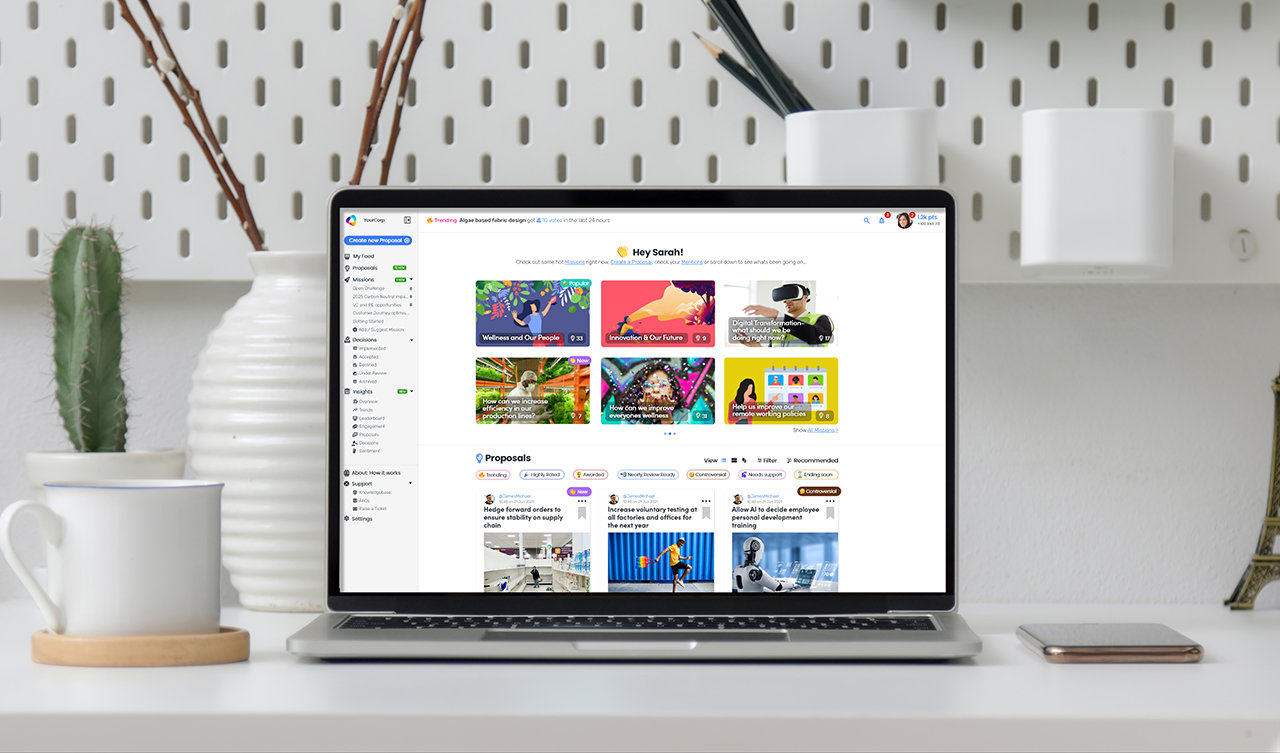
Swae is helping organizations across the world to solve today’s problems, create tomorrow’s strategy and make decentralized decisions more easily.
From Startups to Enterprises to DAOs, our clients find that their greatest resource is their people, and Swae is proven to help get the best from this untapped potential.
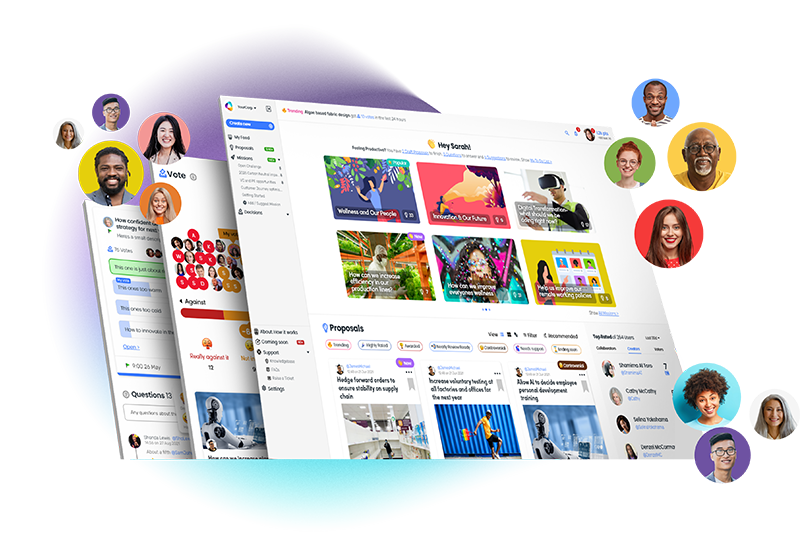
Find your next winning ideas using Swae
More to explore…
Winning Climate Solutions Announced at Climate Call Grand Finale
COP28 Crowdsourcing Platform for Climate Innovation – Swae and UICCA launch ClimateCall.com
COP28 Crowdsourcing Platform for Climate Innovation Swae and UICCA launch ClimateCall.com4 min read, 23 Nov 2024The world today is facing three planetary crises: climate change, biodiversity loss and unmanageable amounts of...
Swae accellerates Web3 & DAO push with CDL
Swae accelerates into web3 with CDL One of the most respected accelerator programs in the world of technology entrepreneurship29 Nov 2022 1 min ReadWe are excited to announce that earlier this month, Swae was accepted into the Creative Destruction Lab (CDL) in its...




